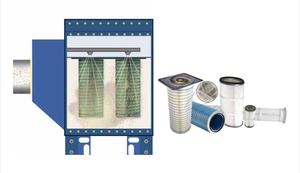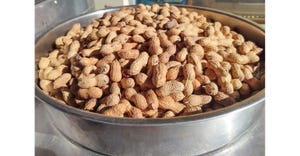October 5, 2015
Eric Maynard is ready to deliver the basics of powder and bulk solids next week in Texas. And there are many people who need to learn the basics of powders and bulk solids – from the novice in the field to even the most senior engineers, said Maynard, senior consultant and director for Massachusetts-based Jenike & Johanson.
For example, many engineers with years of experience may use equations or theories that apply to liquids or gases and expect that bulk material will flow the same way. Or engineers may use a rule of thumb or mythological tips for their bulk material.
“It’s amazing to me how many people overestimate their understanding of the fundamentals,” Maynard said.
Maynard will focus on the fundamentals and more as part of three conference sessions he will lead at Powder & Bulk Solids Texas, held Oct. 13-14 at the NRG Center in Houston.
In his first session, Fundamental of Bulk Material Handling and Flow, Maynard will discuss the typical flow properties that can occur in a bin, silo, or hopper – the basics or 101 course for bulk solids. "It’s a great start for a new staff member in the field of bulk solids handling,” Maynard said.
His next session, Hoppers and Silos: Troubleshooting Storage Problem-Areas, occurs immediately after his fundamental course and is intended to solve problems with material flow in hoppers, bins, and silos with the idea that conference attendees will be able to apply what they learned in the first session. “It’s much more practical,” Maynard said. “It’s applying the fundamentals.”
Discover the fundamentals of powders and bulk solids from Eric Maynard and more at |
Maynard’s final session, Conveying Selection for Material Handling Success, occurs on the second day of the conference and although it is not as directly related as the first two sessions, you need to be able to understand material flow before you can convey it. “If you’re not able to feed it into the conveyor, you aren’t going to be able to convey it,” Maynard said. “You need to have the basics down.”
To that end, Maynard will also discuss the importance of knowing your powder or bulk material. He compares knowing your powder or bulk material to designing a pump for water or ketchup: the design for pumping ketchup would be more difficult than the one for water.
The same goes for powders and bulk material: you need to know if the material is going to hang up, whether it’s abrasive, if it will flow like a liquid, be susceptible to particle segregation, and so on.
No industry is without powder flow problems, although the type of powder flow problem each industry encounters may be different, says Maynard. For example, in the pharmaceutical industry, rarely will the product being manufactured cause abrasive issues but in the mining industry, abrasiveness is a major issue.
“My experience from going around the world is every single application has had a material handling issue,” Maynard said. “They all run into their own problems.”
Joe Florkowski is the managing editor for Powder & Bulk Solids. He can be reached at [email protected]
For related articles, news, and equipment reviews, visit our Mechanical Conveying Equipment Zone.
Click here for a list of Mechanical Conveying Equipment Manufacturers.
You May Also Like


